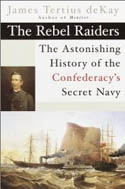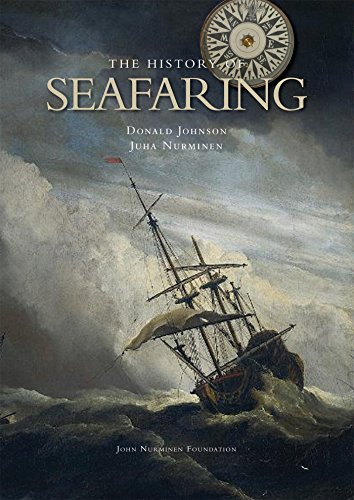Sea Captains: San Francisco 1800s
Captain J. B. Hutchings
January 9, 1853, Daily Alta California, San Francisco, California
We readily give the following communication from Capt. Hutchings, and Mr. Ford, Pilot, placed in our columns and as readily admit the possibility of Mr. Martin, our reporter, having made a hasty statement, though we think it bears no evidence of having been written by an "enraged man." His excitement, moreover, was quite natural under the circumstances. The testimony of Messrs. Flint & Peabody, appended to the statement made by Capt. Hutchings, is sufficient to screen the general character of that officer from reproach.
Disgraceful and Inhuman Conduct
San Francisco, January 8, 1853
EDITORS ALTA -- Gentlemen:--The article in your paper of today headed "Disgraceful and Inhuman Conduct," places us in a most unenviable position before the public, solely on the representation of an enraged and hasty man. You are aware that there are always two sides to a case; we will therefore state the circumstances attending the capsizing of the news boat, and the reason why aid was not rendered.
At the moment the boat came alongside, a squall struck the barque, parting the fore and main topgallant staysail and jib halyards, and of course the crew were all busily engaged in taking in sail, to save the masts of the vessel.
I, B. F. Ford, the Pilot, threw a line to the boat, but in coming alongside, she capsized, and, as stated by Mr. Martin, himself and another man reached the barque, and we saw the third get upon the boat.
Mr. Martin at once demanded that a heavy yawl boat (by him called a small boat lashed on the house for the voyage, should be put over to rescue the lad. It was actually impossible to launch such a boat under the circumstances, and he must have seen it with us, if he had not been so nearly made, for on finding it impossible to do anything, he threatened to shoot us, and swore to have our lives if the boy was lost.
After the vessel was under safe canvas, we hove our foretopsail to the mast, and waited for a Whitehall boat to come alongside for Mr. Martin. We regret that the excitement he was under should prevent him from seeing that in the condition of the barque at that time it was impossible to render the assistance required.
J.B. Hutchings, Master of barque Ork,
B. F. Ford, Pilot
The undersigned having known Captain J.B. Hutchings for several years, in the employ of the owners of the Ork, have ever regarded him as a humane and considerate man, and believe him utterly incapable of seeing a fellow-being in distress without rendering aid, if possible. It is known that in the month of January, 1851, while on his way from Boston to Oregon in the Ork, during a severe gale of wind, he fell in with the wreck of the British brig Emblem, of Halifax, and saved her crew of six men, at the risk of his own life and that of his crew, with the loss of both of his boats.
J. B. Hutchings, Master of barque Ork,
Flint, Peabody & Co.
Since the above was handed in, the following message from Mr. Martin has been received, from which it appears that Mr. Ford, Pilot, who subscribes to the above, has concluded to carry his resentment against newspapers and the public in general so far as to deny reporters the usual privileges accorded the representatives of the public press in collecting intelligence. Inquiry will be made into this matter.
MESSRS. EDITORS--I went alongside the Globe last evening after dark, between Fort Point and the Heads, when the Pilot, Mr. Ford, refused to give me a line, or allow me to come alongside. On inquiry, I found he was the same who was Pilot of the Ork, when my boat capsized. He told me to publish him again, and also informed me that I should never board another vessel that he was on board of. In consequence of his not giving me a line, or allowing me to come on board, the public are without the usual information.
R. S. Martin

The Authority to Sail: The History of U.S. Maritime Licenses and Seamen's Papers
Robert Stanley Bates, George Marsh (Editor), John F. Whiteley (Forward)
(Batek Marine Publishing, 2011; Nominated in 2012 for a Pulitzer Prize)
This book depicts important aspects of our maritime history never before addressed. This synthesis of key elements of our rich maritime history might never have occurred without the many years of original research done by the author, Commodore Bates, the holder of an unlimited master's license who has enjoyed a distinguished fifty-year career in both the Coast Guard and the American Merchant Marine.

Before the Wind: The Memoir of an American Sea Captain, 1808-1833
Charles Tyng
Tyng (1801-1879), who rose from cabin boy to captain and prosperous merchant, wrote this account of his early sailing days in later life. In 1996, this memoir was found by his great-great-granddaughter, Susan Fels, who edited the 419-page handwritten manuscript. An unruly boy sent to live in various homes by his rather forbidding father, Tyng first shipped on a merchant vessel at the age of 13. He hated it. But he loved his second voyage and soon became one of the youngest captains in the American merchant fleet. As Tyng tells of voyages around the world carrying cargoes of bullion, tea, linseed oil, molasses and other items to Holland, China, Cuba and other destinations, he writes with understatement, modesty and a deadpan humor that might or might not be intentional.
Tales of the Seven Seas:
The Escapades of Captain Dynamite Johnny O'Brien
Dennis M. Powers
Captain Dynamite Johnny O'Brien sailed the seven seas for over sixty years, starting in the late 1860s in India and ending in 1930 on the U.S. West Coast. He sailed every type of ship imaginable, but this book is more than the story of Captain O'Brien's incredible feats. Tales of the Seven Seas is about sailing where danger and adventure coexists on a daily basis. Smell the salt in the air and hear the ocean's rush as a ship plows its way through heavy seas with hardened men, leaking seams, and shrieking winds. These true stories are about tough times and courageous men in distant places, from the Hawaiian Islands to the Bering Sea, from the waning days of sail to the age of steamships.

The Life and Times of Georgetown Sea Captain Abram Jones Slocum, 1861-1914
Robert McAlister
Born at sea on his father's whaling ship in 1861, Captain Slocum learned the seafaring life in New Bedford, Massachusetts as part of the last generation of iron men aboard commercial wooden sailing ships in the Atlantic. His voyages often took him around Cape Hatteras to Georgetown, South Carolina, to load lumber bound for northern cities. He sailed in all seasons, through storms and hurricanes, for twenty years as captain of two schooners, the Warren B. Potter and the City of Georgetown. He was respected in Georgetown, where he wooed his wife. His ship sank in a collision with an ocean liner in 1913, but he survived, only to be lost at sea a year later as captain of another schooner.
The Sea Chart: The Illustrated History of Nautical Maps and Navigational Charts
John Blake
The sea chart was one of the key tools by which ships of trade, transport and conquest navigated their course across the oceans. John Blake looks at the history and development of the chart and the related nautical map, in both scientific and aesthetic terms, as a means of safe and accurate seaborne navigation. This handsome work contains 150 color illustrations including the earliest charts of the Mediterranean made by thirteenth-century Italian merchant adventurers, as well as eighteenth-century charts that became strategic naval and commercial requirements and led to Cook's voyages in the Pacific, the search for the Northwest Passage, and races to the Arctic and Antarctic.
The Rebel Raiders
The Astonishing History of the Confederacy's Secret Navy

James T. deKay
During its construction in Liverpool, the ship was known as Number 290. When it was finally unleashed as the CSS Alabama, the Confederate gunship triggered the last great military campaign of the Civil War; yet another infamous example of British political treachery; and the largest retribution settlement ever negotiated by an international tribunal: $15,500,000 in gold paid by Britain to the United States. This riveting true story of the Anglo-Confederate alliance that led to the creation of a Southern navy illuminates the dramatic and crucial global impact of the American Civil War. Like most things in the War between the States, it started over cotton: Lincoln's naval blockade prevented the South from exporting their prize commodity to England. In response, the Confederacy came up with a plan to divert the North's vessels and open the waterways, a plan that would mean covertly building a navy in Britain with a cast of clandestine characters.
The History of Seafaring: Navigating the World's Oceans

Donald Johnson and Juha Nurminen
Royal prestige, intellectual curiosity, and territorial expansion all propelled mankind to undertake perilous voyages across unpredictable oceans. This large and lavishly illustrated volume brings that history to life. From the early Phoenician navigation techniques to the technologies behind today's mega-ships, the greatest advances in shipbuilding are covered, accompanied by hundreds of images, with an in-depth look at navigational instruments (including those used by the Vikings).
The Authority to Sail: The History of U.S. Maritime Licenses and Seamen's Papers
Robert Stanley Bates, George Marsh (Editor), John F. Whiteley (Forward) (Batek Marine Publishing, 2011; Nominated in 2012 for a Pulitzer Prize)
This book depicts important aspects of our maritime history as a result of original research done by the author, Commodore Bates, the holder of an unlimited master's license who has enjoyed a distinguished fifty-year career in both the Coast Guard and the American Merchant Marine.
The U.S. Coast Guard issues all Captain Licenses for U.S. Ports.
Note: Other countries have different regulations, i.e. the RYA (Royal Yachting Association), conducts certification for Britain and Ireland. As of 2011, they did not recognize the USCG certification; certification through their courses was required.Master Unlimited is a licensed mariner in ultimate command of a vessel any gross tons. The captain is responsible for its safe and efficient operation, including cargo operations, navigation, crew management and ensuring that the vessel complies with local and international laws. All persons on board, including officers and crew, other shipboard staff members, passengers, guests and pilots, are under the captain's authority and are his or her ultimate responsibility. The STCW defines the Master as Person having command of the ship.
The Sea Chart
The Illustrated History of Nautical Maps and Navigational Charts
John Blake
The sea chart was one of the key tools by which ships of trade, transport and conquest navigated their course across the oceans. Herein is a history and development of the chart and the related nautical map, in both scientific and aesthetic terms, as a means of safe and accurate seaborne navigation. 150 color illustrations including the earliest charts of the Mediterranean made by 13th-century Italian merchant adventurers, as well as 18th-century charts that became strategic naval and commercial requirements and led to Cook's voyages in the Pacific, the search for the Northwest Passage, and races to the Arctic and Antarctic.
Get Your Captain's License. Fifth Edition
Charlie Wing
Considered the quickest, easiest, and least expensive way to prepare for the U.S. Coast Guard captain's ratings exams required for anyone who takes paying passengers on a boat, and useful for serious boaters who want to save money on insurance. 350 pages of seamanship and navigation tutorials. More than 1,500 questions and answers from the Coast Guard exams. Includes an interactive CD-ROM with all 14,000 questions and answers in the USCG database, so you can take an unlimited number of practice exams











 Copyright ~ 1998-2018.
Copyright ~ 1998-2018. 